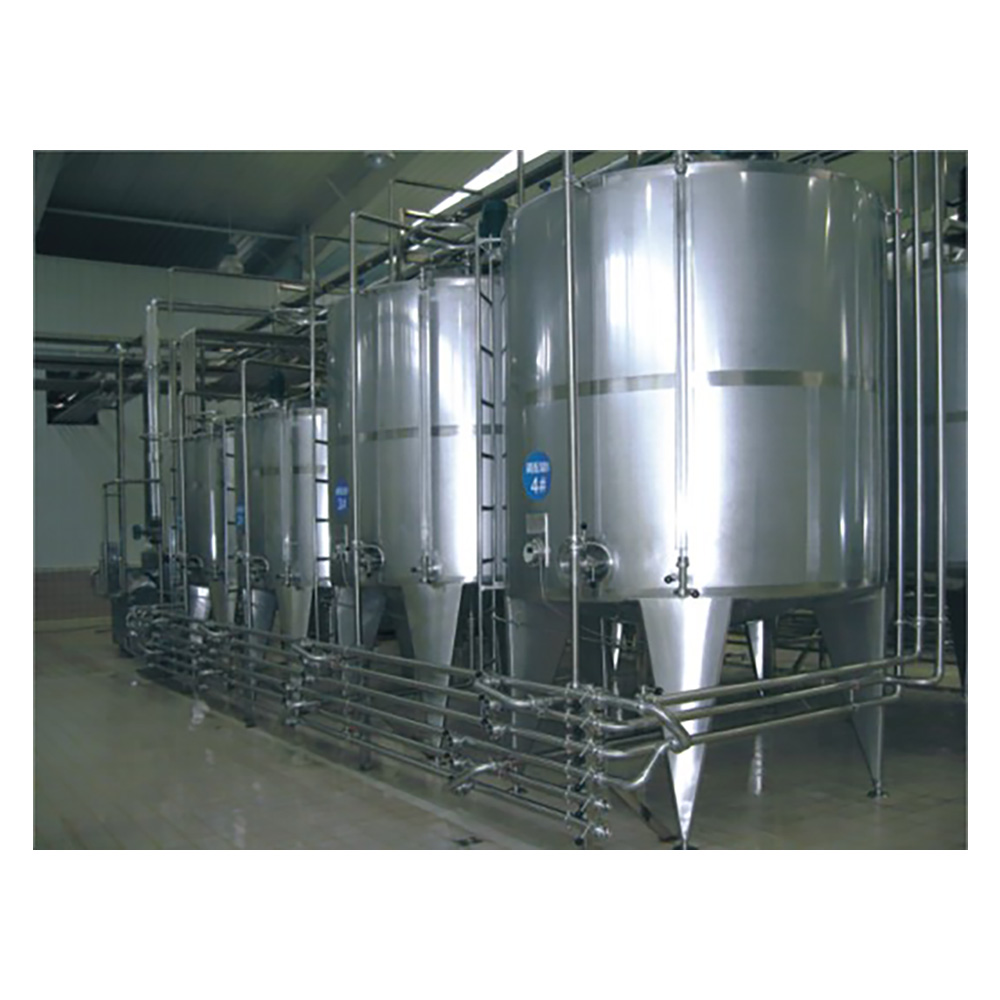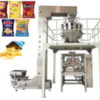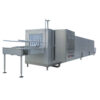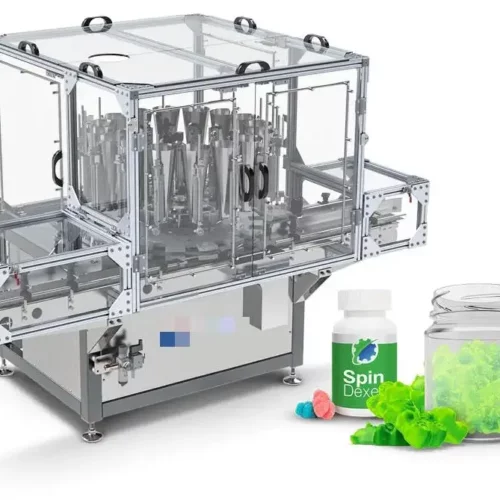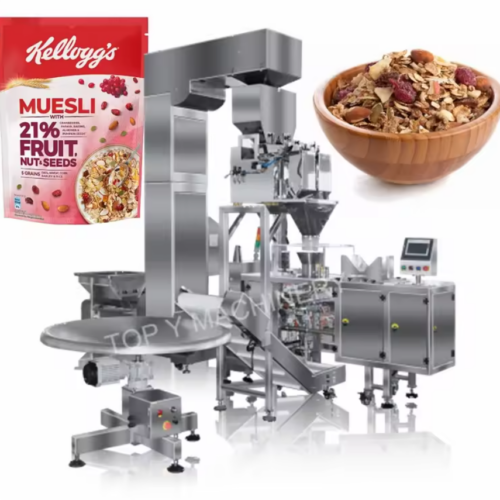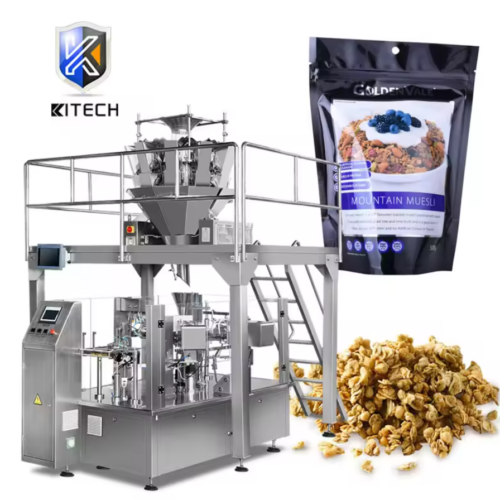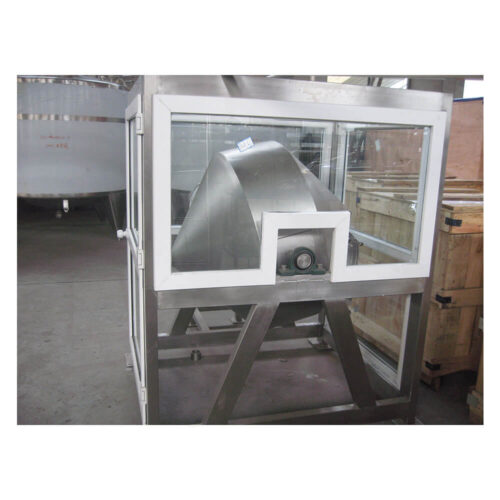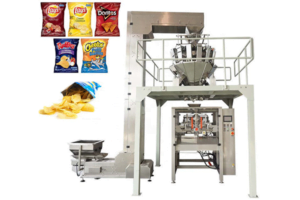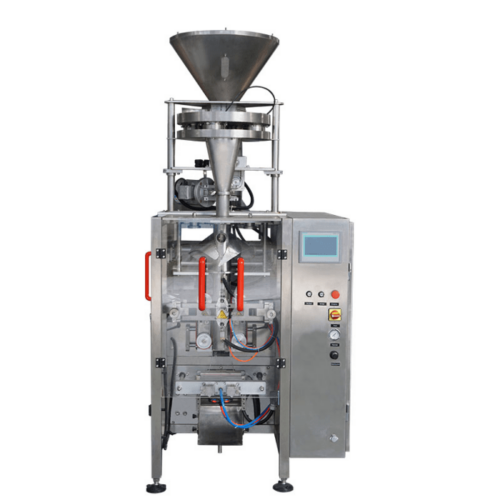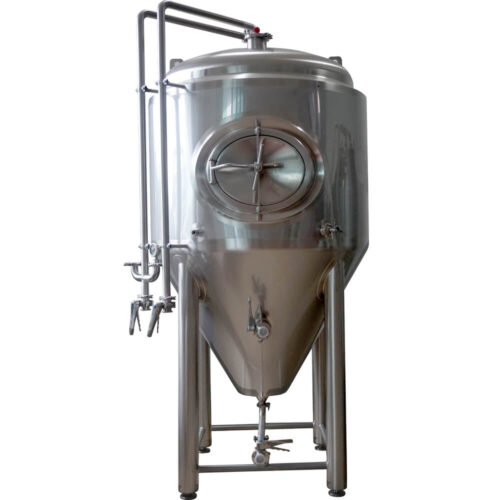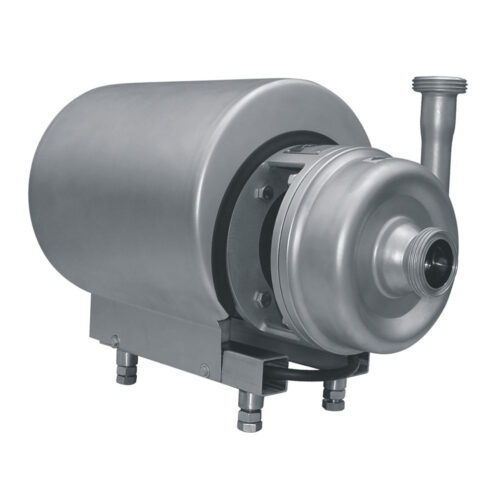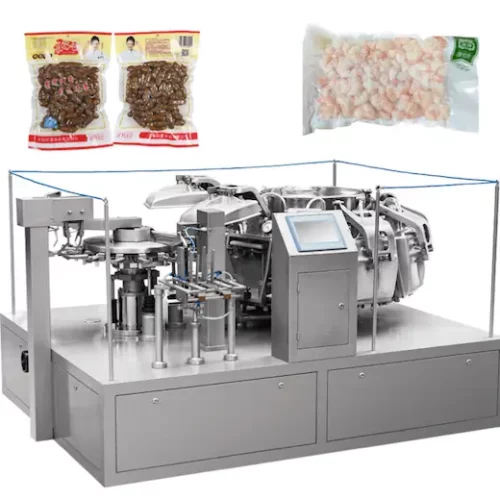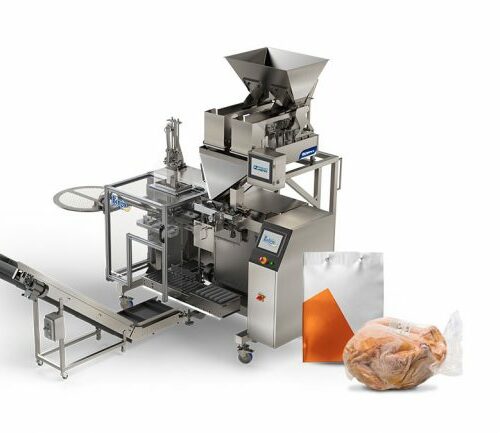In the dynamic world of industrial mixing and processing, blending tanks stand out as a cornerstone technology, critical for a multitude of applications ranging from food and beverage preparation to pharmaceutical formulation, chemical engineering, and beyond. These specialized tanks represent a harmonious marriage of robust design and cutting-edge technology, ensuring precise mixing, blending, and homogenization of different substances, a process vital to product quality and consistency.
At the heart of this industry is PkgMach.com, a beacon of reliability, offering an array of machinery solutions tailored to meet diverse operational needs. With its roots firmly planted in China, the company has burgeoned into a global name, synonymous with quality, efficiency, and unparalleled customer service. Whether you’re a burgeoning small enterprise or a large multinational corporation, PkgMach.com’s extensive catalog, ranging from blending tanks to intricate packaging machinery, is engineered to propel your business to new heights of operational excellence.
In this comprehensive guide, we delve deep into the world of blending tanks, exploring their functionality, applications, and the intricate nuances influencing their design and operation. We’ll also shed light on China’s pivotal role as a global supplier, the custom services that set PkgMach.com apart, and the critical questions every international buyer should arm themselves with when venturing into the market. Whether you’re a novice to the world of industrial mixing or looking to upgrade your existing setup, this guide is your quintessential companion, ensuring a seamless, informed, and rewarding purchase journey.
Understanding Blending Tanks: Core Functionality and Design
Navigating the technical landscape of blending tanks requires an understanding of their fundamental purpose: these are industrial vessels designed to mix, homogenize, and blend a variety of components, a process pivotal in industries as diverse as food and beverage, pharmaceuticals, cosmetics, and chemicals. The efficacy of a blending tank is not solely reliant on its mixer; the tank’s design plays an equally critical role in the successful outcome of any blending process.
As highlighted by industry experts at dynamixinc.com, the architecture of the blending tank is paramount. The design dictates the efficiency of the mixing process, influencing factors such as impeller positioning and liquid coverage. Incorrect configurations can compromise not only the quality of the end product but also the operational longevity of the mixer itself.
Typically, blending tanks come in vertical cylindrical shapes or square/rectangular forms, with the choice heavily dependent on the specific application and volume requirements. The liquid level to tank diameter ratio is a crucial design element, with a 0.8 ratio identified as ideal for most mixing applications. However, it’s the nuanced details like the placement of baffles in cylindrical tanks or the specific type of agitator (paddle, propeller, or anchor types, to name a few) that fine-tune the mixing process, optimizing efficiency and output quality.
In the realm of blending tanks, customization is king. Suppliers from China, renowned for their manufacturing prowess, offer bespoke tank designs catering to unique operational needs. Whether it’s the incorporation of a double layer for PU insulation or the integration of a specific type of agitator, these customizations are instrumental in aligning the blending tank’s performance with the intended application, ensuring an outcome that adheres to the highest standards of precision and quality.
Why China is a Global Leader in Blending Tank Manufacturing
China’s emergence as a powerhouse in the manufacturing sector is a well-chronicled narrative, with its influence particularly pronounced in the production of industrial blending tanks. This dominance is not serendipitous but the result of a confluence of factors: an expansive industrial base, a skilled workforce, and a tradition of engineering excellence.
Chinese manufacturers are not mere assemblers of blending tanks; they are innovators, constantly pushing the boundaries of design and functionality. They have mastered the art of balancing cost-effectiveness with high-quality outputs, making them an attractive option for businesses globally. Their ability to offer custom services, from initial design conceptualization to post-sales support, sets them apart in the international arena.
PkgMach.com stands as a testament to China’s industrial success story. With a commitment transcending mere machinery sales, the company prides itself on understanding the nuanced needs of each client, offering tailored solutions that optimize operational efficiency. Their reputation as a quality manufacturer is not just local but echoes across international shores, assuring buyers of a sound investment.
The blending tanks emerging from the workshops of Chinese manufacturers are a fusion of innovation, efficiency, and reliability. They reflect a deep understanding of industry-specific needs, an agile response to global market trends, and an unwavering commitment to customer satisfaction.
Selecting the Right Blending Tank: Types and Applications
The journey to procuring the ideal blending tank begins with an intricate understanding of the various types available and their specific applications. Blending tanks, though similar in their core function, diverge significantly in design and capability, making certain types more suited for specific industries and applications.
Types of Blending Tanks:
- Single-layer Tanks: Ideal for operations that don’t require heating or cooling, these tanks are perfect for simple mixing of products at room temperature.
- Double-layer Tanks with PU Insulation: These tanks come equipped with an outer layer designed to prevent heat transfer, making them perfect for processes requiring temperature maintenance.
- Three-layer Dimple Jacket Tanks: Best suited for applications necessitating heating or cooling, these tanks allow for temperature control, essential in the pharmaceutical or food and beverage industries.
Applications:
- Food and Beverage Industry: From flavor milk and UHT milk mixing to beverage blending, these tanks are pivotal in achieving consistent taste and texture.
- Pharmaceuticals: In an industry where precision is paramount, blending tanks ensure accurate mixing of medicinal components.
- Cosmetics: These tanks are vital in the homogenization of various beauty products, ensuring uniformity and stability.
Customization Options:
Understanding that businesses have unique needs, companies like PkgMach.com offer extensive customization options. Whether it’s adjusting the material used in construction (with choices between SUS304 and SUS316L stainless steel) or modifying the agitator type to suit the viscosity and density of the product, these customizations ensure that the blending tank aligns perfectly with operational requirements.
PkgMach.com: Your Trusted Blending Tank Supplier
In the bustling marketplace of blending tank suppliers, PkgMach.com emerges as a beacon of reliability and quality. With its foundations deeply rooted in China, the company has burgeoned into a global name, offering an extensive range of machinery solutions, including an impressive portfolio of blending tanks.
Why Choose PkgMach.com?
- Tailored Solutions: PkgMach.com stands out for its commitment to understanding the unique needs of each client, providing customized solutions that ensure optimal operational results.
- Extensive Range: The company’s vast product range caters to a multitude of industries, offering everything from simple single-layer tanks to more complex, jacketed variants.
- Unwavering Quality: With a reputation built on the pillars of reliability and quality, PkgMach.com ensures that every blending tank adheres to the highest standards, providing clients with a sound investment.
The Manufacturing Process: From Factory to Deployment
The creation of a blending tank is an intricate ballet of engineering prowess, precision, and adherence to quality standards. It’s a multi-stage process that begins with the conceptualization of design, influenced by specific operational needs, and culminates in the deployment of the tank within a production line.
Design Phase: Here, the focus is on the tank’s intended use. Factors such as the type of materials to be blended, the required temperature controls, and the preferred mixing speed inform the design specifics. This phase sees the selection of materials (like SUS304 or SUS316L stainless steel for durability and corrosion resistance), the determination of the tank’s size and volume, and the choice of the agitator type.
Fabrication Phase: Once the design is locked in, the actual manufacturing begins. This involves cutting and molding the selected steel, assembling the tank components, and installing the agitator and other essential parts like the manway, air vent, and CIP cleaning ball. Rigorous quality control measures are integral at this stage to ensure structural integrity and compliance with industry standards.
Testing Phase: Post-assembly, the blending tank undergoes stringent testing. This phase is crucial for ensuring the tank operates as intended, with a keen focus on its mixing efficiency, temperature control capabilities (if applicable), and overall stability.
Deployment Phase: Once cleared from testing, the tank is ready for installation and integration into the client’s production line. This phase might also involve training for the operational staff and the provision of maintenance guidelines to ensure the tank’s longevity and optimal performance.
Operational Guide: How to Use Your Blending Tank
A blending tank, with its sophisticated design and operational nuances, requires a comprehensive understanding for its effective use. Here’s a step-by-step guide to setting up and operating your blending tank:
Installation: Ensure the tank is positioned on a flat, stable surface capable of supporting its weight, especially when filled. All fittings, including the agitator, should be securely attached, and electrical connections (if any) properly set up.
Filling: When adding materials, ensure they are introduced steadily to prevent splashing and potential injuries. The fill level should comply with the specifications provided by the manufacturer to prevent overfilling or underfilling, both of which can affect mixing efficiency.
Operation: Once filled, the tank is ready for operation. Start the agitator at the recommended speed, and monitor the mixing process to ensure consistency. If the tank has temperature control features, set them to the required levels for your product.
Cleaning and Maintenance: Post-operation, the tank should be cleaned to prevent cross-contamination. Most tanks come equipped with CIP cleaning balls for this purpose. Regular maintenance checks on the agitator, seals, and other components are essential for the tank’s longevity.
Engaging with Suppliers: Key Questions International Buyers Should Ask
Effective communication with suppliers is crucial in the international procurement process. Here are key questions buyers should ask when engaging with Chinese suppliers:
- What customization options do you offer, and how do they impact production timelines and costs?
- How do you ensure quality control throughout the manufacturing process?
- What are your terms for payment, shipping, and after-sales service?
- Can you provide references or case studies from past clients?
- What certifications do your products and manufacturing processes hold?
Having these questions at hand ensures transparency and can significantly influence the decision-making process.
In this final section, we address frequently asked questions that buyers often have when investing in a blending tank. Additionally, we provide insightful tips to ensure a smooth and informed purchasing experience.
FAQs:
- What factors should I consider when choosing the material for my blending tank?
- Consider the type of substances you’ll be mixing (corrosive, acidic, etc.), the required hygiene standards, and the environmental conditions of your facility.
- Can blending tanks handle both hot and cold mixing processes?
- Yes, but you’ll need a tank with temperature control capabilities, like a jacketed tank, for precise heating or cooling.
- How do I determine the right size and volume for my blending tank?
- Assess your production capacity, the volume of ingredients you plan to mix, and the space available in your facility.
- What safety measures should I adhere to when operating a blending tank?
- Ensure proper installation, follow the manufacturer’s operational guidelines, use protective gear, and conduct regular maintenance checks.
- How does the agitator type influence the mixing process?
- Different agitators (paddle, propeller, anchor, etc.) are designed for various mixing intensities and materials. Your choice should align with your mixing needs.
- What are the signs that my blending tank requires maintenance?
- Look for signs like inconsistent mixing, unusual noises, and leaks. Regularly check components for wear and tear.
- Can I upgrade my existing blending tank to improve its functionality?
- Yes, discuss with your supplier about available upgrade options, such as adding a different type of agitator or integrating temperature control features.
- What should I do if my blending tank malfunctions?
- Stop operation immediately and consult your supplier’s after-sales support team. Avoid attempting to fix electrical components on your own.
- How often should I clean my blending tank?
- After each use, especially if you’re switching between different materials. Adhere to hygiene standards specific to your industry.
- Why should I choose a Chinese supplier for my blending tank?
- Chinese suppliers offer a balance of cost-effectiveness, quality, and customization options, backed by a robust manufacturing infrastructure.
Tips:
- Research Extensively: Before settling on a supplier, conduct thorough research, compare options, and read reviews and testimonials.
- Communicate Clearly: Be explicit about your needs and specifications. Clear communication prevents misunderstandings and ensures you get the product that fits your requirements.
- Understand the Costs: Beyond the initial purchase price, consider other costs like shipping, installation, and maintenance.
- Plan for the Future: Consider your long-term needs. It might be more cost-effective to invest in a tank with additional features you’ll need down the line.
- Leverage After-Sales Support: Opt for suppliers who offer comprehensive after-sales service. This support is invaluable for troubleshooting, maintenance, and parts replacement.
Investing in a blending tank is a significant decision, one that requires a deep understanding of your operational needs, the features and specifications of the tank, and the reliability of the supplier. With its stronghold in manufacturing, China presents a compelling marketplace for these essential pieces of equipment. Suppliers like PkgMach.com stand out for their commitment to quality, customization, and customer satisfaction. As you venture into the selection and purchase process, this comprehensive guide serves as your roadmap, ensuring a choice that not only meets your current operational demands but also positions you for future growth and success.

